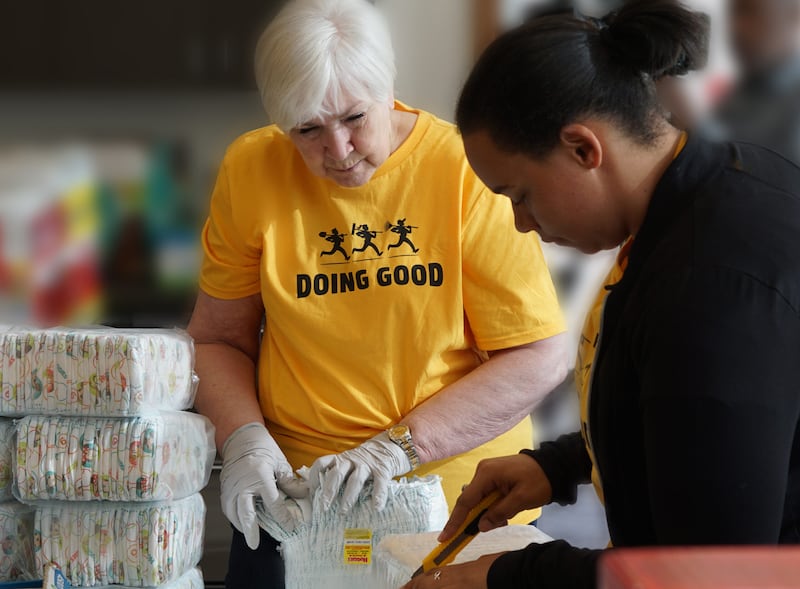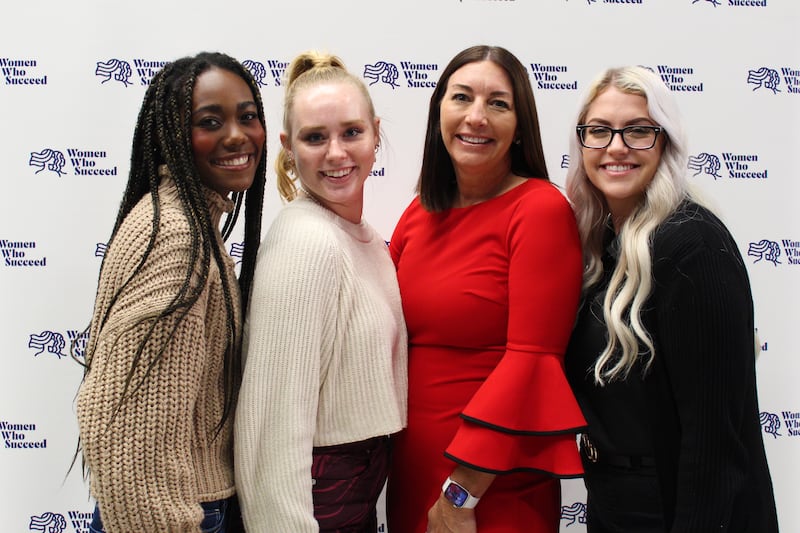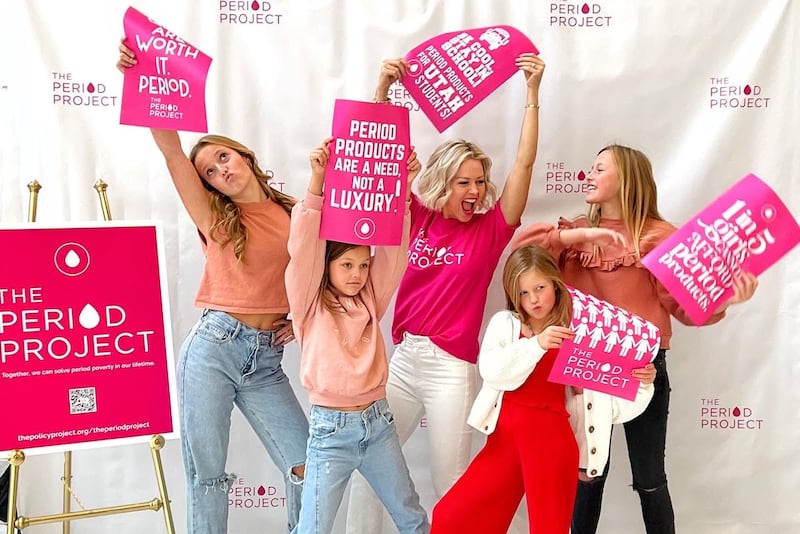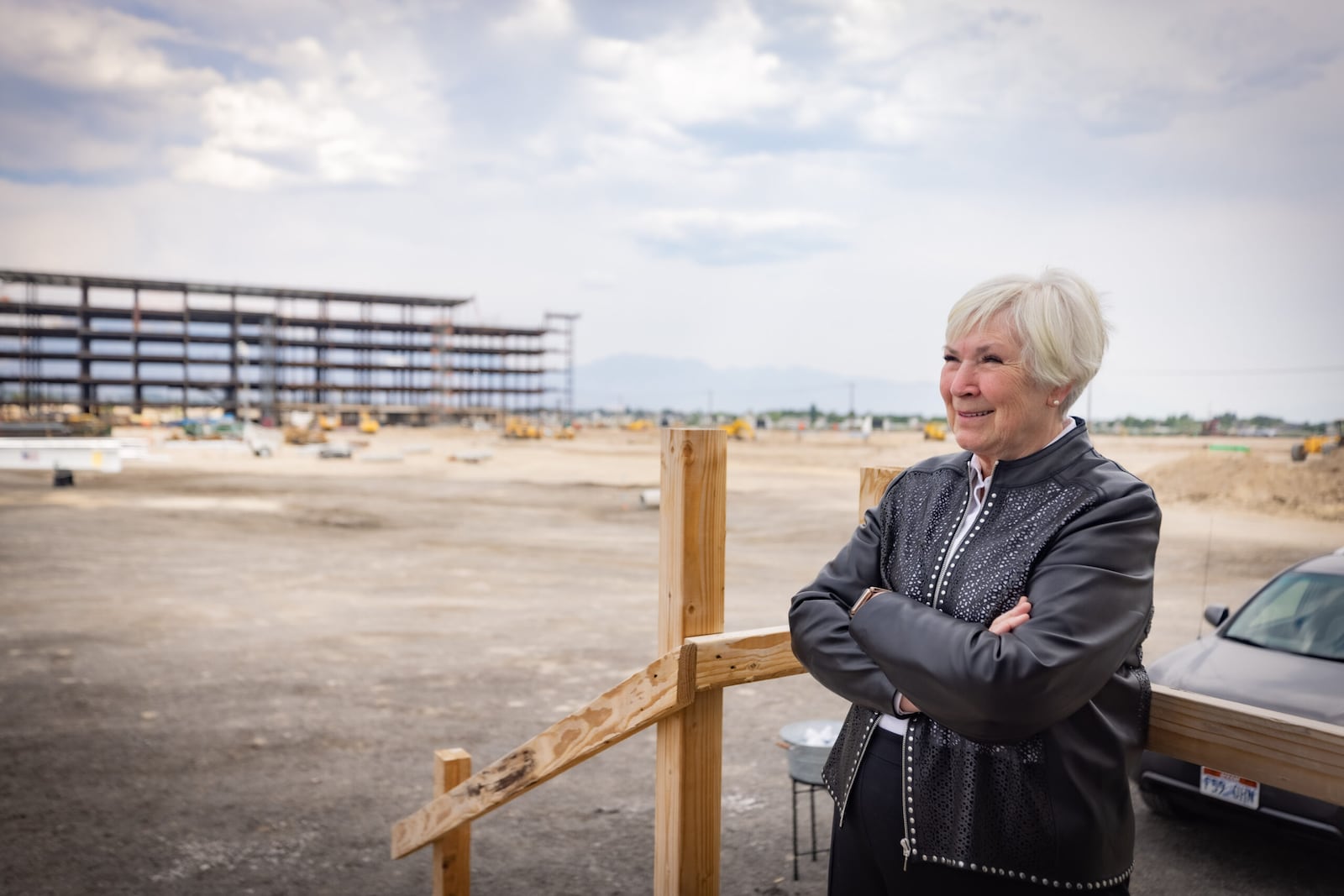Gail Miller | Photo by Melissa Majchrzak
Gail Miller remembers the day, long before the Larry H. Miller & Gail Miller Family Foundation was established, that philanthropy became a prominent part of her life.
“When you make a profit, there are a lot of places you can put that money,” she says. “[Larry and I] initially decided to put profits back into the business to shore it up. One day, Larry said we were finally at a point where we could use that money to do something more substantial philanthropically. It’s important to learn how to maximize the use of your money by putting it where it does the most good. That may mean putting it back into the business short-term in order to have more to give away long-term.”
Of all the perks affluence brings, one gets remarkably little attention, considering how happy the affluent will tell you it makes them: giving money away. Indeed, the link between generosity and feelings of happiness has been scientifically proven, with more generosity producing more happiness.
In Utah, many seriously affluent families create private charitable foundations to maximize the effectiveness and longevity of their philanthropy. Each year, these foundations oversee the redistribution of well over $300 million in Utahns’ personal wealth to nonprofits.
Self-made and selfless
In 2002, the list of Utah’s 10 highest grantmaking foundations was led by some familiar names: Eccles, Huntsman and Sorenson. Twenty years later, those three families remain at the top—but the balance of the list consists of all new names, according to data compiled by CauseIQ.
Of the seven new arrivals, only two might be considered powered by intergenerational wealth. The rest were founded by entrepreneurs born very much in the middle class, according to their bios (which suggests Utah is an excellent place to be ambitious).
The foundation established by Qualtrics founder Ryan Smith and his wife Ashley sat at #16 on CauseIQ’s grantmaking list in 2021. However, when 2022’s numbers are released, the Ryan and Ashley Smith Foundation will very likely have catapulted near the top of the list, based on donations such as $20 million to support cancer research at Primary Children’s Hospital.
But in a way, Smith’s money is already in the top 10. The Larry H. and Gail Miller Family Foundation was able to increase the capacity and impact of its giving in 2020 and 2021, backed in part by Smith’s purchase of the Utah Jazz from the Larry H. Miller Company—a transaction Gail Miller smilingly refers to as “the liquidity event.”
While the Eccles, Huntsman and Sorenson foundations had a multi-decade head start, Gail Miller has nonetheless emerged as the state’s first name in philanthropy. This is likely because of her unique perspective, having been present for the entirety of her family fortune’s generation, and her very active role in redistributing it.
But Julie Ramos, the managing director of philanthropy at the Larry H. & Gail Miller Family Foundation, thinks it goes beyond that. She recalls a time when Gail was asked if it was time to stop accepting unsolicited proposals, saying, “Gail refused. She said we always need to keep our doors open. That attitude makes Gail surprisingly and unusually accessible and an exemplary figure of philanthropy in Utah. She makes sure everyone has a meaningful human-to-human experience.”
Running a foundation like a business
Gail Miller is aware of her uniquely high-touch approach to her job and attributes it to suddenly finding herself in charge after spending years in a supporting role.
“[Larry] was handling philanthropy from his seat as the owner of the company. When he passed away and I took over that job, it was a whole different view,” she says. “I learned that the responsibility was very real, the needs were great, and we couldn’t help everyone—but we could help some.”
Then, Gail Miller and her team discovered the key to having a greater impact: running the foundation more like a business.
“If you are run by emotion and give away money just because it feels good, it may not have the same impact it would if you took the time to study and measure opportunities against the criteria you’ve set up,” Gail Miller says, adding that the first step was bringing long-time Utah Jazz executive Don Stirling on as executive director.
So, while one might think that the tenfold influx in foundation resources produced by the sale of the Utah Jazz would liberalize the Millers’ attitude toward grantmaking, the opposite has been true.

Photo courtesy of the Larry H. Miller & Gail Miller Family Foundation
“At first, we just met as a family board to look at each request and determine which would be the most impactful,” Gail Miller says. “Then, Don came on, and we started being more deliberate about where we put our money rather than being reactionary.”
Today, Steve Miller is chairman of the board that oversees the businesses his father and mother created while also sitting on the board of the Miller Family Foundation. In addition to Stirling’s arrival, he says a focus-sharpened paradigm shift accompanied the 2020 cash infusion.
“Our whole perspective on philanthropy changed with that influx of money,” Steve Miller says. “Before, there wasn’t a lot of accountability. Today, the amount we can give is much more significant, which leaves us feeling much more responsible for ensuring the outcomes are measurable. We also find ourselves saying ‘no’ more often, where we didn’t as much before. Not because we don’t want to help, but because we are being more intentional about what we are supporting and looking for causes that align with our passions.”
Emotion is a servant, not a master
Though Stirling was hired to act as a dispassionate check on grantmaking decisions, there remains plenty of emotion in the criteria he uses to evaluate requests.
“We ask three questions,” Stirling explains. “The first is, if not for us, does help come? As the philanthropic circle grows, will other donors assist if we don’t? Second, if we do give, are there others who would join us in making this particular gift? And finally, is this effort sustainable and will it actually be transformational and bring real change?”
The struggle to maintain emotion is a consistent theme when discussing decision-making in philanthropy. Erin Trenbeath-Murray, executive director of the Robert H. and Katharine B. Garff Foundation, says her organization manages emotion by maintaining an extremely narrow focus on post-secondary education and measuring success based more on outcomes than output.
“We can say we sent 20 kids to college, but that’s the output. What those students do with that opportunity is the outcome we’re looking for,” Trenbeath-Murray says. “Will those 20 people graduate, contribute to our community and help stimulate Utah’s economy? That’s a very different question from, ‘How many kids did I send to college?’”
Meaningfully measuring outcomes requires philanthropists to maintain a high degree of long-term involvement. Trenbeath-Murray says this represents a significant paradigm shift from when foundations and nonprofits tended to interact just once a year to ask for more money.
“It used to be that nonprofits just got their gift and then went off to do good work, which was great, but donors really want to know they’re actually moving the needle,” Trenbeath-Murray says. “It’s not unreasonable in today’s climate that nonprofits should share not just outputs, but the actual outcomes.”
This expectation for greater transparency began to take hold with the passage of the Sarbanes-Oxley Act of 2002 and the significantly increased financial reporting requirements it placed on public companies, Trenbeath-Murray adds.
Utah’s thriving economy and the high number of tech unicorns it’s spawning are likely to produce more and more situations where liquidity events suddenly endow relatively young entrepreneurs with many millions of dollars to give away. Trenbeath-Murray counsels those future philanthropists to apply the lessons of their business success to structuring their foundation.
“In business, you define your mission, core values and non-negotiables based on what’s really important to you. Do the same thing with your philanthropy,” she says, advising that designing a foundation with a mission and core values that align with existing passions will help set expectations both ways. “[Applicants] should know that if you award them funding, it’s like a partnership. They’re agreeing to make certain things happen, and if they fail, they fail fast, analyze why, pivot, adjust and try something else.”
Promoting a hive mentality
A living symbol of the emergence of a new generation of philanthropists is Kristin Andrus, the wife of Traeger Grills CEO Jeremy Andrus. The Andruses have benefited from more than one liquidity event, which allows Kristin’s resume to consist of a single word: philanthropist.
“I drop my kids off at 8:00 a.m., pick them up at 3:30 p.m., and in between, I’m a philanthropist. It’s my day job,” Andrus says. “That means running our foundation, helping nonprofits, working on policy and generally being out in the community trying to fill gaps that I find.”
But Andrus deserves to call herself more than just a philanthropist, as much of her time is spent working with nonprofits to create connections and alliances that will make them more effective. Quarterly, Andrus gathers Utah nonprofits—particularly those focused on serving vulnerable youth—together in the same room to network with one another and receive training with the goal of helping them see each other as partners rather than competitors for the same limited resources.

Erin Trenbeath-Murray with her mentees. | Photo courtesy of Erin Trenbeath-Murray
Andrus gives the example of the Garff Foundation looking for gifts to beautify the homes of newly arrived refugees. At one of Andrus’ networking events, the Garff Foundation discovered that special needs students at a local high school were raising funds by selling potted plants. The Garffs soon took a delivery of over 200.
“That is exactly what I want to have happen. We can’t work in silos as nonprofits,” Andrus says. “It’s all there. We just need to work together, and we will all be so much better off.”
Among the many philanthropy lessons Andrus has learned along the way, one of the most impactful came in the middle of what has come to be one of her most high-profile moments.
“I’d gone to a middle school in Murray and learned they desperately needed period products. I raised $60,000 online from my followers and had my friends buy and bring boxes of tampons and pads to my home until my three-car garage was literally packed to the brim. Jeremy looked at me in the middle of it all and said, ‘At some point, I’ll need to get my car back in there. I don’t think this is sustainable,’” Andrus remembers, laughing.
Agreeing that a longer-term solution was needed, Andrus took a page from her own playbook and worked with another nonprofit, the Utah Food Bank, as a storage and distribution partner. She then joined with The Policy Project to create The Period Project and successfully helped lobby the state legislature for funding to provide free period products in schools state-wide. Andrus spearheaded the private side of this public-private partnership, wherein her family foundation—along with the Larry H. & Gail Miller Family Foundation—funded period product dispensers for every women’s and all-gender school bathroom in Utah.
“When it was all over, I realized that is what it means to look upstream rather than constantly wonder how much more money we need to raise,” Andrus says.
Gail Miller finds meaning in the dynamic that catalyzed the solution to Andrus’ larger challenge.
“I’ve also come from the for-profit world and know it’s sustainable to do things consistently and use criteria to make decisions,” she says. “These are all important business aspects with application in the philanthropic world.”
To the Gen X founders working toward a liquidity event, Andrus recommends laying the foundation of their future philanthropy now.
“Decide what you’re passionate about today,” she says. “Find that super sticky cause you keep coming back to and start giving now while you’re in your 40s and 50s—not only because you can do a lot of good today, but also because it’s so much fun.”

Photo courtesy of Kristin Andrus

